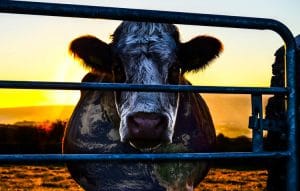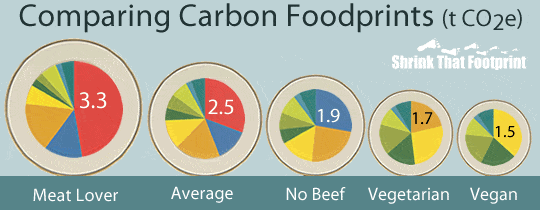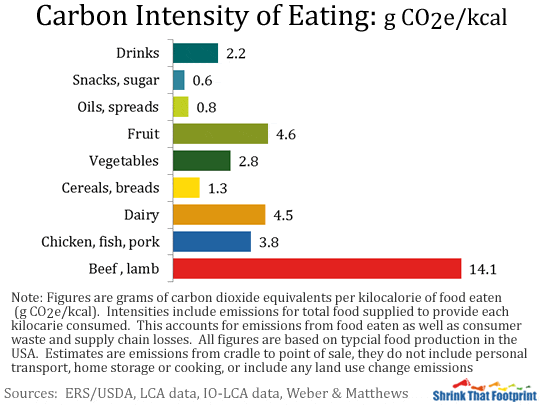Digital Nomads and Food
 Here is where Digital Nomads are actually being below the average CO2 pollution caused by human food consumption. Many of the Digital Nomads I have met are vegan, vegetarians, or are trying to limit there meat consumption to twice a week.
Here is where Digital Nomads are actually being below the average CO2 pollution caused by human food consumption. Many of the Digital Nomads I have met are vegan, vegetarians, or are trying to limit there meat consumption to twice a week.
It’s becoming more and more clear that meat consumption might be the most polluting industry in the world, more than all transport combined! Animal agriculture might be responsible for 18 percent of all greenhouses gasses.
By cutting down meat you might be doing the most to help the environment; and digital nomads seem exactly to be doing that.
Furthermore Digital Nomads seem to value organic, local and fresh. Many digital nomads I have met preferred the local market for their local veggies and fruits; instead of the big supermarkets with plastic packaging and overseas products.
Here Digital Nomads get a big plus!
How to eat more sustainable?
Food is an important part of our current lifestyle. We love food, we look forward to dinner with friends, and we can really appreciate that delicious meal after a long day work. But do you know the impact of your choices? Have you thought about the impact that food is making on the world? Below I list a short guide of facts and suggestion that might help you cut down your carbon emission by making different food choices.
Meat is the most polluting source of food you can eat
Meat might be the most important item of our day to day meal. It’s where we plan our dinner around, it’s probably the first thing you pick in the supermarket. For many meat-eaters it’s not a realistic thought to become a vegetarian, but would it be possible to cut down on meat consumption?
Over the last few years the idea has risen of really appreciating the meat you eat and valuating it for what it is. Instead of eating some chemical-pumped piece of chicken 7 days a week; why not save some money and spend this on a real good piece of meat twice a week? Look forward to that day you can eat that special organic grown meat full of flavour and nutrients. Value meat for what it is, something special that we should cherish.
Note: I do not argue for eating only the ‘good parts’ of any animal. There is a movement, called nose-to-tail, which believes that every part of the animal should be appreciated and be used for consumption.
Below you will see the carbon foodprints of different kind of eating habits. On the left is the meat lover with 3.3 tons of CO2 per year, compared to the vegan wit only 1.5tons of CO2 per year.
 If you have a closer look into these diets you will find that especially Beef and Lamb cause a lot of CO2 polution. This is due to the bad digestive system of a cow and the fact that they produce a lot of methan (farts). Lamb causes a lot of emission due to the fact that there a large part of the animal is not suited for human consumption.
If you have a closer look into these diets you will find that especially Beef and Lamb cause a lot of CO2 polution. This is due to the bad digestive system of a cow and the fact that they produce a lot of methan (farts). Lamb causes a lot of emission due to the fact that there a large part of the animal is not suited for human consumption.

Tips to cut down your Carbon Emission by food choices
- Consider eating (more) vegetarian
- Cut down your per-portion meat. You don’t need 250 gram of steak.
- Try to eat meat maximum twice a week.
- If you eat meat, try to replace beef and lamb with pork and chicken.
- Eat seasonal & local.
- Drink tap water where possible.
- Don’t let food go to waste.
- Reduce waste by bringing your own container and reusing bags.
When cooking on your own, be aware of the



